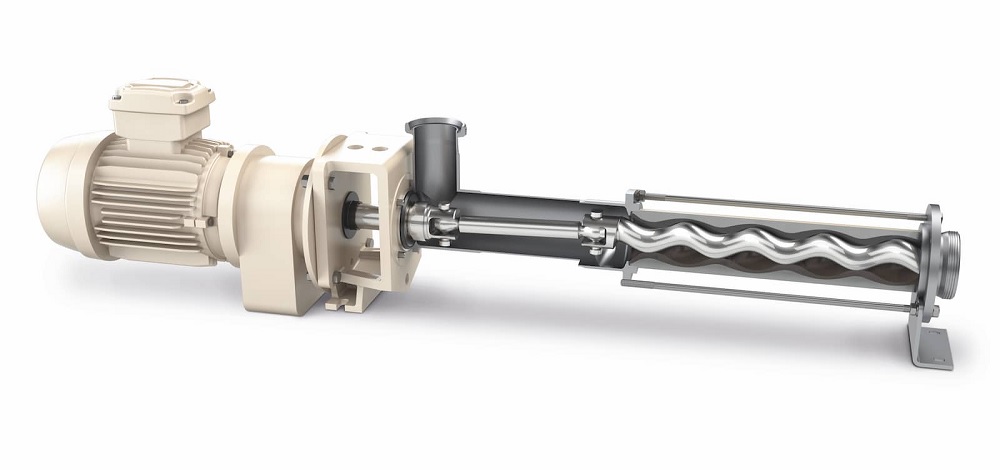The continuous development and improvement of technologies have transformed various industries, including transportation. As demands for faster and more efficient ways of moving goods continue to rise, traditional methods are no longer sufficient to meet the needs of businesses. In response to this demand, progressing cavity pumps have emerged as a game-changing innovation in the transportation industry. These pumps utilize advanced engineering principles to move liquids and solids through pipelines with ease, making them an essential tool for transporting a wide variety of materials. In this blog post, we will dive into the world of progressing cavity pumps and their impact on the transportation industry, highlighting their benefits over conventional pumping systems and exploring their role in revolutionizing logistics.
Progressing cavity pumps and their role in the transportation industry
Progressing cavity pumps are a type of positive displacement pump that has been gaining popularity in the transportation industry. These pumps are specially designed to handle viscous fluids, making them an ideal choice for transporting various types of fluids such as crude oil, gasoline, and lubricants. Unlike other types of pumps, progressing cavity pumps can handle fluids with a wide range of viscosities, making them highly versatile. Their efficiency, reliability, and low maintenance requirements are just some of the reasons why they have become a popular choice for transportation companies. With their ability to handle a wide range of fluids and their superior performance, progressing cavity pumps have become an essential tool for the transportation industry.
How progressing cavity pumps work and why they are more efficient than traditional methods
Transport pumps are an essential component for industries, responsible for moving various substances from one location to another. Progressing cavity pumps have quickly become the preferred method of transportation due to their efficiency and unique design. These pumps work based on a displacement principle, using a rotor and stator to create a continuous flow of fluid. The rotor progresses through the stator, creating cavities that trap the fluid and move it forward. This design means the pump can handle a wide range of viscosities and solids without becoming clogged, which is a common issue in traditional methods. The pump creates greater pressure, allowing for increased speeds with less slippage, saving time and energy. Overall, progressing cavity pumps are a reliable and essential part of many industries, thanks to their unique design and impressive efficiency.
Advantages of using progressing cavity pumps
Progressing cavity pumps offer numerous advantages, including reduced costs and higher productivity. These pumps have a simple design, which results in lower maintenance costs and energy consumption. By reducing the need for frequent repairs, they ensure that downtime is kept to a minimum. Furthermore, their ability to handle high-viscosity fluids, such as those in the oil and gas industry, makes them ideal for a wide range of applications. This efficient pumping system reduces the need for additional machinery and personnel, which translates to an increase in productivity. With their proven track record of reliability and efficiency, it’s no wonder why more and more industries are turning to progressing cavity pumps.
How these pumps are environmentally friendly compared to other modes of transportation
As the world moves towards greater sustainability, it’s important to consider all aspects of our daily lives. Transportation is a major contributor to pollution and greenhouse gas emissions, making it a prime target for eco-conscious solutions. Enter pumps, the environmentally friendly alternative to traditional modes of transportation. Not only do pumps release zero emissions, but they also require minimal maintenance, reducing their carbon footprint even further. With advancements in pump technology, they have become a viable option for both short and long-distance use, presenting a cleaner, greener future for transportation. So, the next time you’re planning a trip, consider the benefits of pumps and the positive impact they can make on the environment.
Applications of progressing cavity pumps in various industries
Progressing cavity pumps have proved to be indispensable technology in a wide range of industries, including oil and gas, food and beverage, mining, and wastewater management. These pumps offer unparalleled versatility, making them an ideal choice for pumping viscous fluids, slurries, and solids. They are a reliable and cost-effective option for a variety of applications, including fluid transfer, dosing, and mixing. They have revolutionized the way industries move and handle their materials while reducing the cost of operation and maintenance. As the demand for efficient and reliable pumps continues to increase across various industries, the applications of progressive cavity pumps will only continue to grow.
In conclusion, progressing cavity pumps have revolutionized the transportation industry and are rapidly becoming the preferred method for transporting liquids. As we explored in this blog post, traditional methods such as pipelines and tankers have their limitations, ranging from high costs to environmental concerns. However, with the advancement of technology, progressing cavity pumps offer a more efficient and eco-friendly solution. By understanding how these pumps work and their advantages over traditional methods, it’s no surprise that companies across various industries are adopting them and reaping the benefits. From reducing costs and increasing productivity to being environmentally friendly, there is no denying the impact of progressing cavity pumps on the transportation sector. Not only that but with ongoing research and developments, we can expect even more improvements in the future. These advancements will further cement their role as an integral part of our transportation infrastructure. It’s safe to say that with progressing cavity pumps leading the way, the future of liquid transportation is brighter and more efficient than ever before. So, let’s embrace this innovative technology and continue to move forward towards a better tomorrow for both our industries and our planet.

